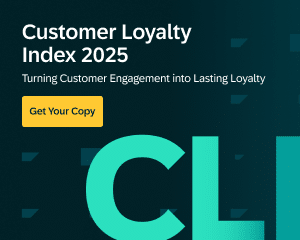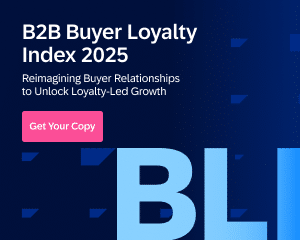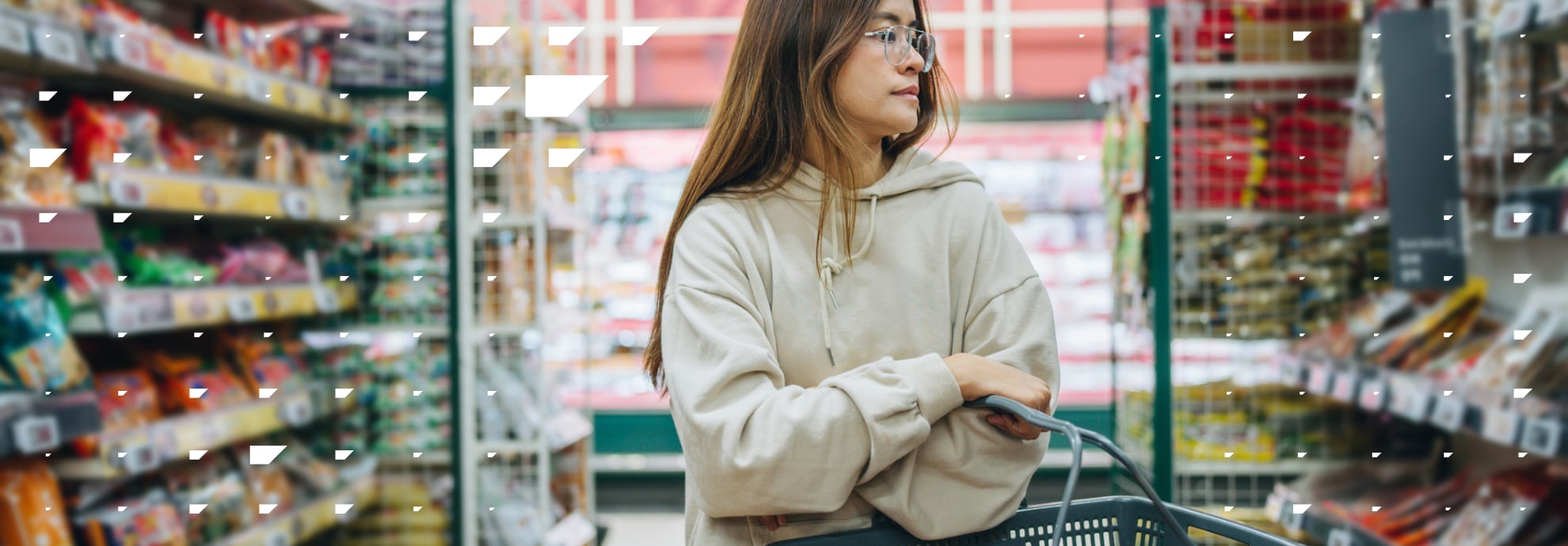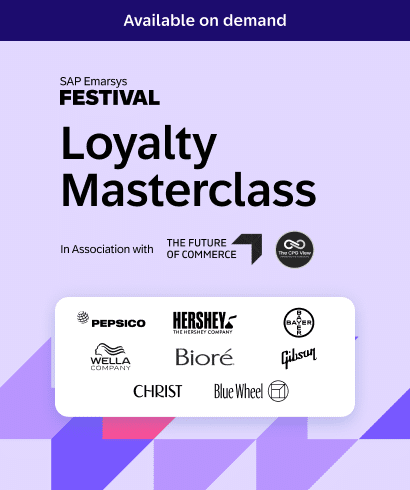What happens when the traditional levers of consumer products marketing stop working?
For decades, brand recognition, mass media, and retailer relationships were enough to sustain growth. But in 2025, we find ourselves in a far more volatile and fragmented landscape. Loyalty is shrinking. Consumers are more selective, more price-sensitive, and more empowered than ever. Channels are multiplying, and digital expectations are escalating.
The Global Consumer Products Engagement Report lays bare the realities many marketers already feel: engagement is harder, competition is fiercer, and transformation is no longer optional. If brands want to win in the Engagement Era, they must accept some hard truths — and act on them.
Here are five realities that every CPG leader needs to face.
1. Brand Loyalty Is Earned, Not Assumed
Consumer loyalty is under pressure like never before. According to the report, 60% of consumers have switched to own-label alternatives to save money, and 63% of Gen Z say they don’t care about brands as long as a product meets their needs. These figures should be a wake-up call for every CPG marketer: loyalty is no longer something you inherit — it’s something you have to earn.
The days of assuming consumers will stick with your brand out of habit or name recognition are over. What replaces it? Consistent, personalized, value-driven engagement across the entire consumer journey.
As Cristina Marinucci, VP Global Growth & Omnichannel Insights at Mondelez, explained:
“Loyal consumers are going to be more receptive to our messages… They’ve already invested in our brand. And that’s going to make them more likely to engage.”
Melda Hamarat, Global Head of Digital Commerce Strategy at Unilever, agreed that loyalty today is built on deeper, more deliberate brand experiences:
“To really keep on building that loyalty… we need to feed brand relevance throughout each and every single touchpoint.”
In other words, loyalty is the result of relevance, not repetition. And that relevance must be continually earned, personalized, and proven, especially in a market where value-conscious consumers are quick to explore alternatives.
2. Retail Media Alone Won’t Save You
Retail media is quickly becoming a core line item in the CPG marketing mix, but many brands are still treating it as a standalone tactic — optimized for visibility, but disconnected from loyalty.
That’s a problem.
The Global Consumer Products Engagement Report reveals that while 31% of brands plan to increase investment in retail media, the most mature (high CEM) brands are using it very differently: not just to convert, but to connect.
Retail media shouldn’t exist in isolation. It must serve a broader engagement strategy — one that takes into account where a consumer is in their relationship with the brand and what kind of message will build trust and repeat purchase behavior. It’s not just about reaching more shoppers; it’s about reaching the right ones, with the right message, at the right moment.
Done well, retail media can reinforce loyalty, deliver personalized content at scale, and even enable more relevant, occasion-based campaigns. But if it’s siloed, divorced from CRM, loyalty data, or brand voice, it risks becoming just another cost center.
“Retail media plays a critical role to nurture that relationship… with the right content, which could be about, less about bringing you in but more about giving you an incentive to stock up or messaging around expanding to new occasions.”
3. AI Is Powerful – But Consumers Still Want a Human Brand
AI has become a cornerstone of modern marketing strategies, and for good reason: it enables brands to respond faster, personalize at scale, and automate what was once manual and slow. According to The Global Consumer Products Engagement Report, 76% of CPG marketers say AI is essential for engaging new consumers, and 75% say it’s essential for retention.
But while marketers are bullish on AI, consumer expectations are more cautious. Just 9% of consumers want more AI-driven interactions, and 73% are put off when brands ask for data without explaining how it will be used. The lesson here isn’t to slow down AI adoption — it’s to use AI to enhance trust, not undermine it.
Consumers welcome the outcomes of AI, better deals, timely offers, relevant content, but they don’t want to feel like they’re talking to a machine. The most effective use of AI in CPG marketing is behind the scenes: powering segmentation, optimizing content, and accelerating testing and learning. When used well, it frees up time for marketers to focus on strategy, creativity, and human connection.
The brands that will win aren’t those that automate everything. They’re the ones who use AI to make their marketing more human, not less.
“Think about where you can automate those repetitive tasks, where that can free up time for you to focus more on that meaningful, like, in-depth analysis… I like to talk about AI as minions.”
4. Most Brands Aren’t Ready for What Consumers Expect
There’s a growing divide between what consumers want and what most CPG brands are equipped to deliver.
The Global Consumer Products Engagement Report reveals that only 36% of marketers feel confident in their ability to personalize content effectively, while over half of consumers say their brand experience doesn’t feel personalized. That disconnect poses a risk to retention, advocacy, and revenue.
The issue isn’t just about technology. It’s about capability. Only 39% of marketers have fully integrated their consumer experience, ERP, and marketing systems, and just 33% feel they can effectively segment and analyze their audiences. Without connected systems and real-time insight, even the most well-intentioned personalization strategy can fall flat.
Consumers are willing to share their data when it leads to tangible value. But when the experience isn’t tailored, consistent, or timely, trust erodes. This is where consumer engagement maturity matters most: high-performing brands have unified data, cross-functional teams, and the agility to act on insights — not just collect them.
5. Engagement Isn’t about More Channels — It’s About Smarter Connection
CPG brands today are spread across more channels than ever — email, web, social, mobile apps, retail media, and more.
But increasing channel count doesn’t automatically improve engagement. What matters most is consistency: delivering relevant, timely experiences no matter where or how the consumer interacts.
The Global Consumer Products Engagement Report highlights a clear disconnect between marketer priorities and consumer behavior. While 50% of marketers are focused on e-commerce and 48% on web, consumers are gravitating toward mobile apps (30%) and social content (27%) in addition to more traditional touchpoints.
The message is clear: omnichannel doesn’t just mean being everywhere. It means showing up meaningfully where your consumers already are.
High-maturity brands (those with strong consumer Engagement Maturity scores) excel here. They use connected data, automation, and AI to create seamless journeys that span from first touch to long-term loyalty. In contrast, lower-maturity brands often struggle with fragmentation — disjointed systems, inconsistent messaging, and poor channel coordination.
To compete in today’s market, engagement must be unified across platforms, powered by shared insight, and designed to feel personal regardless of the path to purchase.
Conclusion: Connection Is the New Competitive Advantage
If there’s one takeaway from this year’s Consumer Products Engagement Report, it’s this: disconnected strategies won’t cut it anymore.
Today’s consumers expect brands to know them, respect their preferences, and meet them with relevance — wherever they show up. That’s hard to do when loyalty, retail media, personalization, and AI are all being run in separate silos.
What will make a difference is how well your organization can bring things together — data, teams, channels, and messaging. Because when consumers move quickly and expect relevance at every touchpoint, fragmented strategies fall short.
The most effective brands aren’t relying on quick wins. They’re building long-term engagement systems that help them respond faster, personalize better, and grow smarter. That takes coordination, not just investment.







